Making more boards, and writing a little code....
This week, I had the usual assortments of things
taking longer than I thought they would.
Accomplishments:
- Late night panic, and developed a general purpose ATTINY44 board
that is based off of the FABISP.
- Developed a plugin light/switch paddle board for the above.
- Wrote/burned a little code to make the LED's do something.
- Got my GPIB plotter working, making PCB's and etching.
- Drew up a revised fabuino board with a ATMEGA169 (that has a
short)
- Tried more casting with the shaft coupler, gears, and pen holder
of last week in urathane.
ATTINY44 General Purpose PCB
I wanted a board that I knew would work, so I modified the
fabisp board to break out all of the pins on a header, put on the PCB
usb connector, and a programming connector.

And assembled....
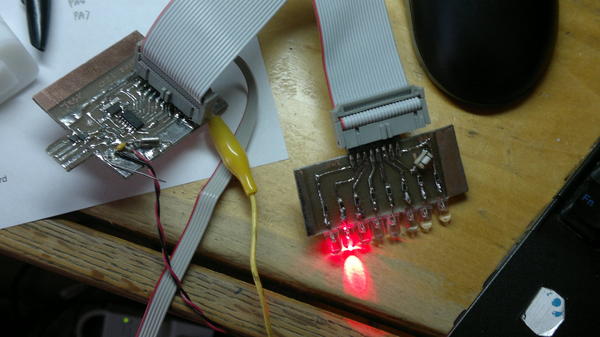
Attached to that board is a LED breakout board with a
button. This could be swapped with other boards with other
types of functionality. It is shown with a little code to
blink some LED's.
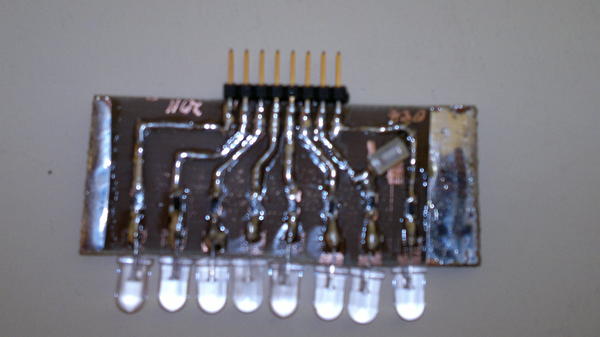
Fabuino Mega168 Board Attempt
Assembled, but there is a short on the reset line.
Will need to debug. Time to spend more quality time
with the microscope!
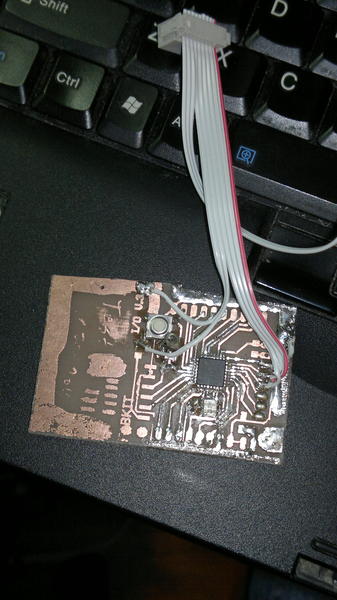
Making PCB's
Much of my time was spent trying to remember how I
used to make circuit boards on an old pen plotter, and experimenting to
see if I could make boards of comparible pitch and quality to those
produced on the modella. This would have two advantages--
the process can be faster, especially for larger boards, and I wouldn't
have to spend late nights at the lab making boards.
Unfortunately, the PC I had that would talk
GPIB to the plotter, decided to finally die. After some
fighting I upgraded it form a 386sx to a k62-233 (I needed an ISA
bus)! Woohoo...
The process is as follows:
1. Scrub board with brillo.... 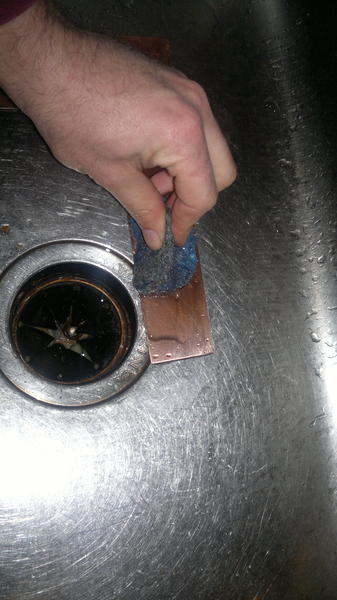
2. Plot board...
3. Mask areas, and touch up artwork...
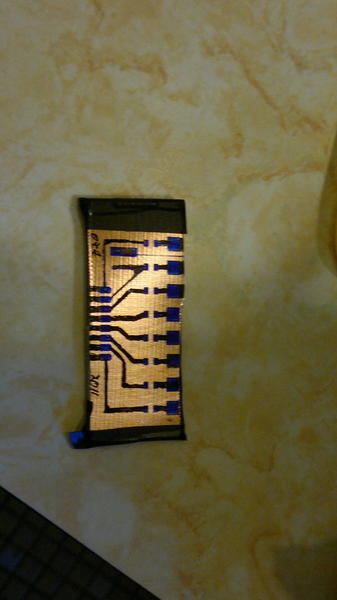
4. Play with fun chemicals... (FeCl) The board is in a
ziplock freezer bag, and I swish it under hot water in the sink for
about 3-5 minutes.
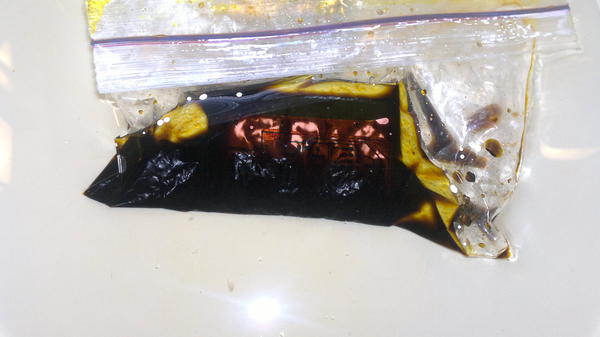
5. Scrub the resist off with brillo, and populate! (See
above)
Results:
I was getting pitting on the
etches. I think it may be due to using a blue pen
instead of a black pen--places I touched up with the black pen eld up
much better.
Casting with Urathane
I tried casting parts with Alumalite (white) hoping that I could
machine, drill and tap them. Turns out I should have
mixed the bottles better. The first parts came out a
little soft, the latest batch came out foamy because I shook the bottle
before mixing. The finished surfaces on the foamy
parts came out ok, but they foamed up on the back side of the
part. Try, try, again!
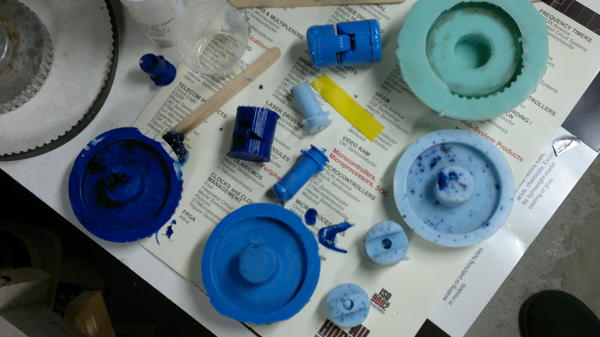
Notes on Embedded Programming Assignment
In the FABISP
makefile, there is a change required to use the FABISP instead of the
Atmel one.
Under the microscope, I could see a sketchy connection
(and maybe I forgot to install a jumper) so both programmer boards now
function!








